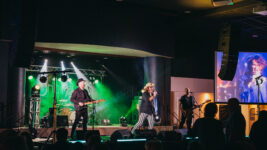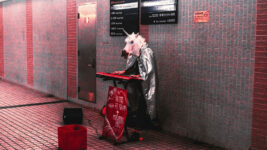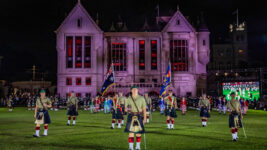OPERA
11 Mar 2024
IDOMENEO
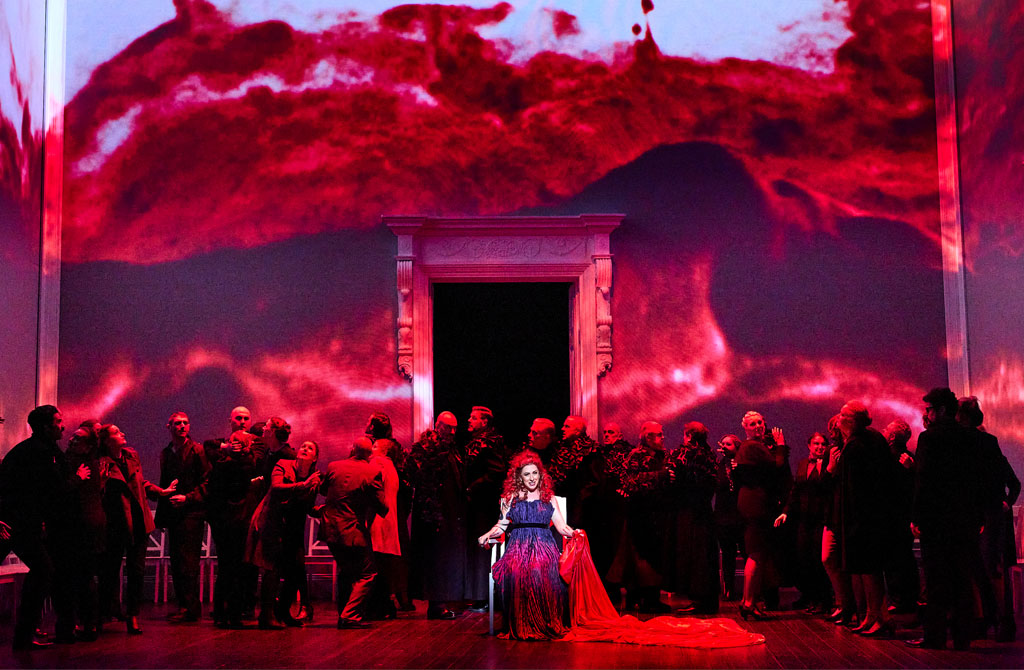
Subscribe to CX E-News
TASMANIA STARS IN MOZART OPERA
Whether you’re a devout fan or harsh critic, you have to admit, there’s something extraordinary about opera. For over 400 years, this art form has been captivating audiences around the world. The music has survived in its true form for centuries. Orchestras have remained relatively unchanged in all their acoustic glory. You will still hear every perfectly enunciated piece of libretto out of an opera singer’s mouth from anywhere in the audience without a microphone strapped to their face.
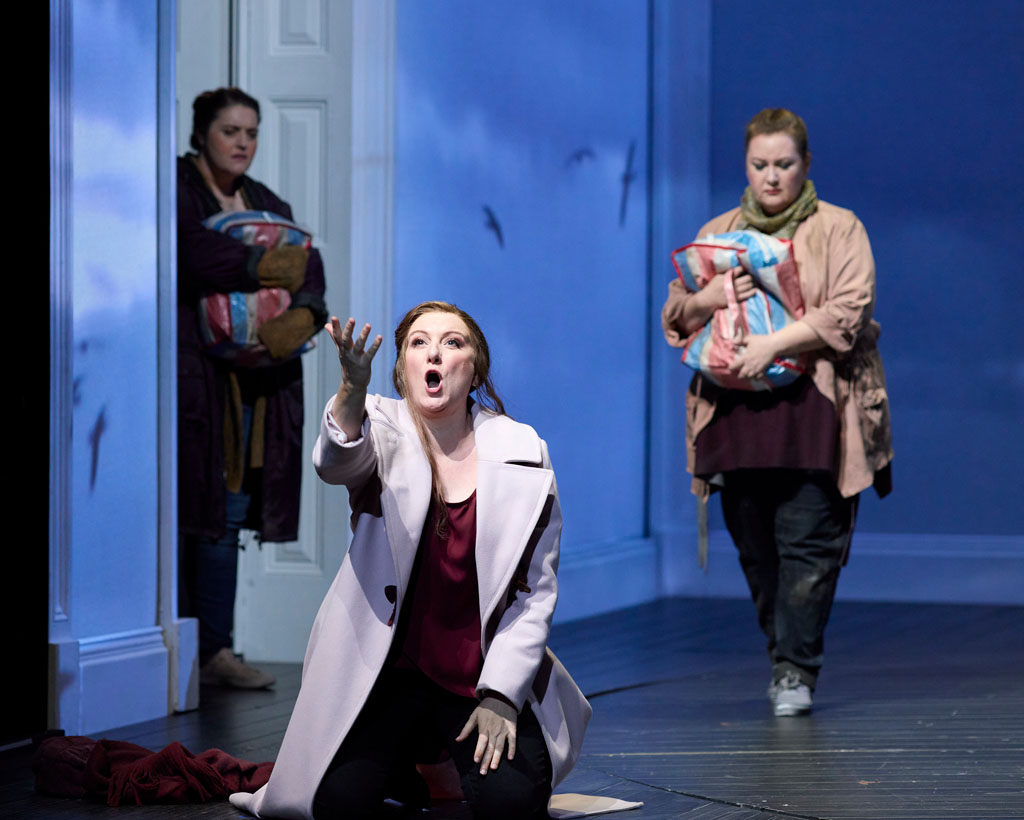
Timeless conventions and structure continue to be honoured and adhered to throughout the global performing arts community. At the same time, behind the scenes, production designers are gaining access to emerging and advancing technologies, allowing them the opportunity to transcend boundaries like never before seen. We are apparently in the midst of the opera “digital revolution”!
LED screens, projection mapping, lighting effects beyond Mozart’s wildest dreams – it’s all coming into play (no pun intended). So why is it that the other stuff – the music and the acting and singing – has not been turned on its head by digitization and mind-blowing technological capability?
“No matter how spectacular the digital imagery, in live performance the humans on stage will always be more interesting. If they’re not, there’s a problem with the storytelling,” Lindy Hume, director of Opera Australia’s Idomeneo states.
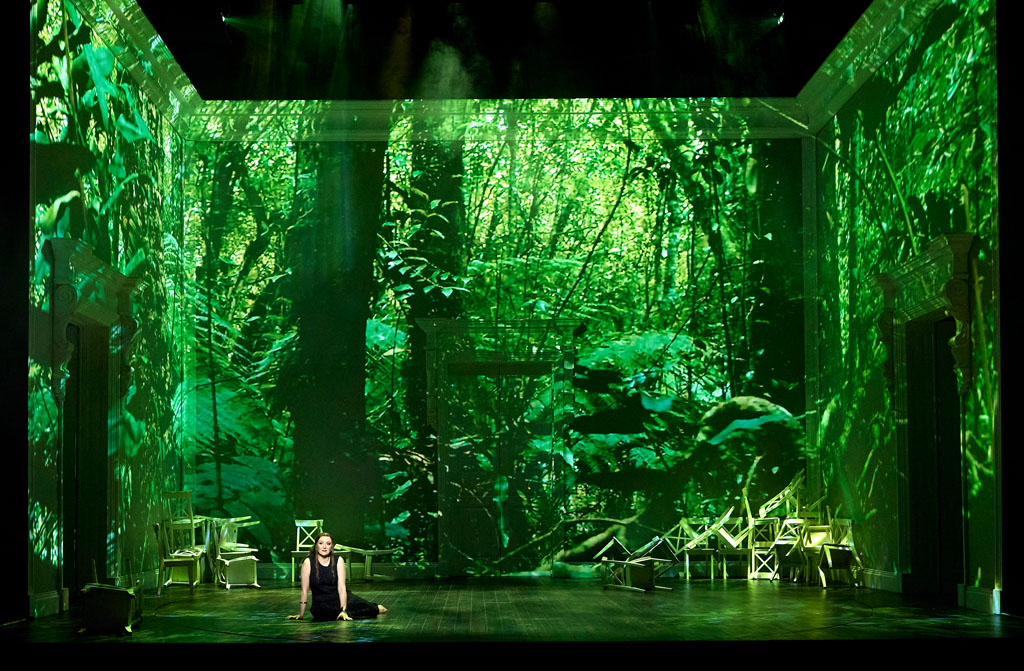
The spectacular digital imagery to which Hume refers in particular is that of the raw and rugged coastline of lutruwita (Tasmania). After spending the last six years in the island archipelago, Hume was inspired by the extraordinary beauty of the land, so much so that capturing some of the spectacular scenery became the perfect answer to representing the setting for Idomeneo, a story which unfolds along the ancient, rugged, unforgiving coastline of ancient Crete. Sending Tasmanian filmmaker Catherine Pettman of Rummin Productions out on location was one of the first steps in creating the immersive environment for Idomeneo.
“The scenery filmed was chosen to progress the narrative through anchoring the world in physical space whilst symbolising the vigorous pneuma within the characters and story arc,” explains Pettman. “The majestic images in Idomeneo are from the precious lands of lutruwita/Tasmania, the remote namanu rruni/ Albatross Island in the north all the way down to its towering cliffs and rolling seas that fortify its deep southern coast.”
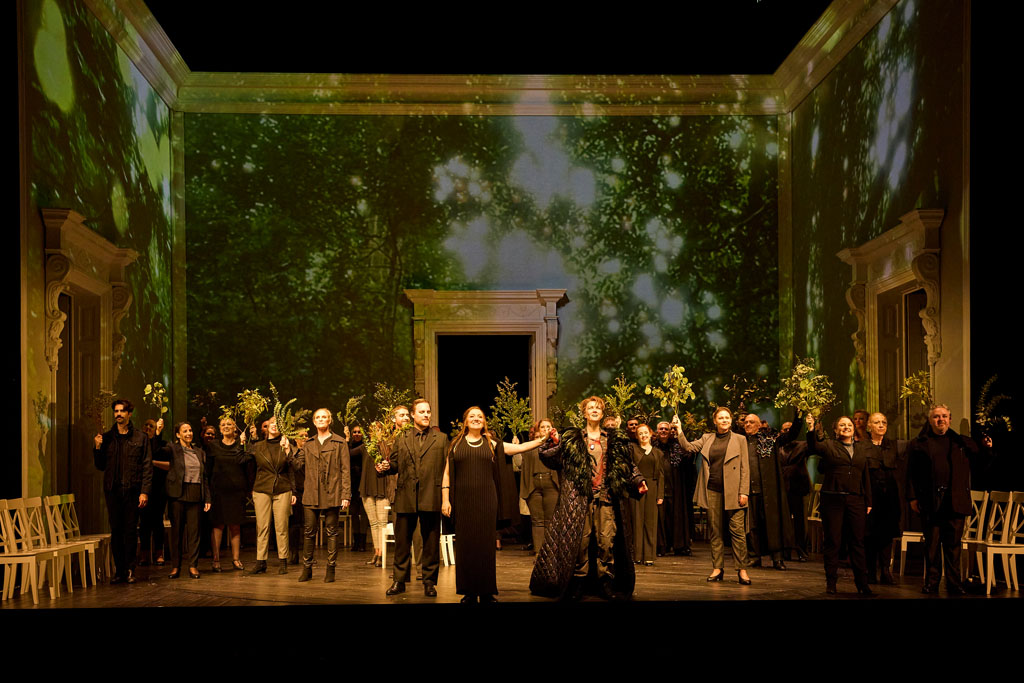
Pettman captured the images on a Blackmagic Design pocket cinema camera in 4K and 2K for slow motion sequences, using a variety of Canon Prime lenses. A Canon EOS 5D Mark IV was the tool of choice for stills.
Rummin Productions provided their scenic footage to Lindy Hume and Idomeneo’s Video Designer, David Bergman, to be edited, timed, and mapped to scenic requirements. “I had a recording of the whole opera laid out on a timeline in our editing software, DaVinci Resolve. This way, every cue could be considered, timed, and synced to the music” recalls Bergman.
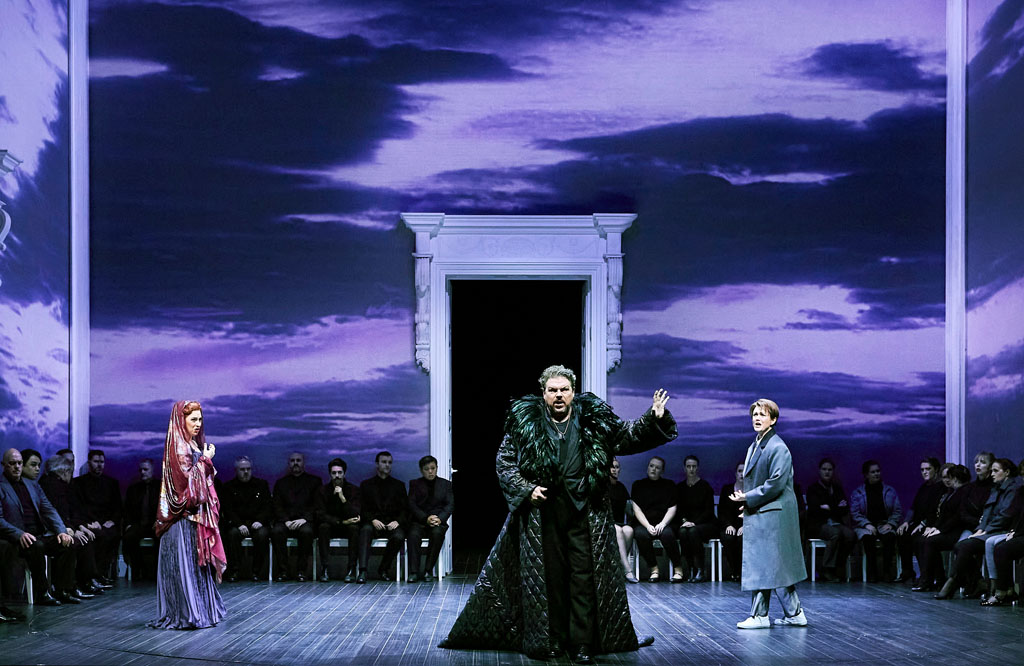
“We spent a week in a room doing a rough cut of the entire opera to the Mozart score. This involved editing crashing waves, flying albatrosses, storm clouds gathering and kelp islands floating in the Tasman sea to coordinate with the conductor’s tempi and dramatic key points,” adds Hume. “It was terrific fun playing God.”
To bring the digital imagery to life, Hume had the idea to repurpose and reimagine American theatre designer, Michael Yeargan’s 1989 set from Massenet’s Werther, a giant, three-sided room with beautiful white gauze walls and a black floor, featuring over-sized white timber doors and cornices.
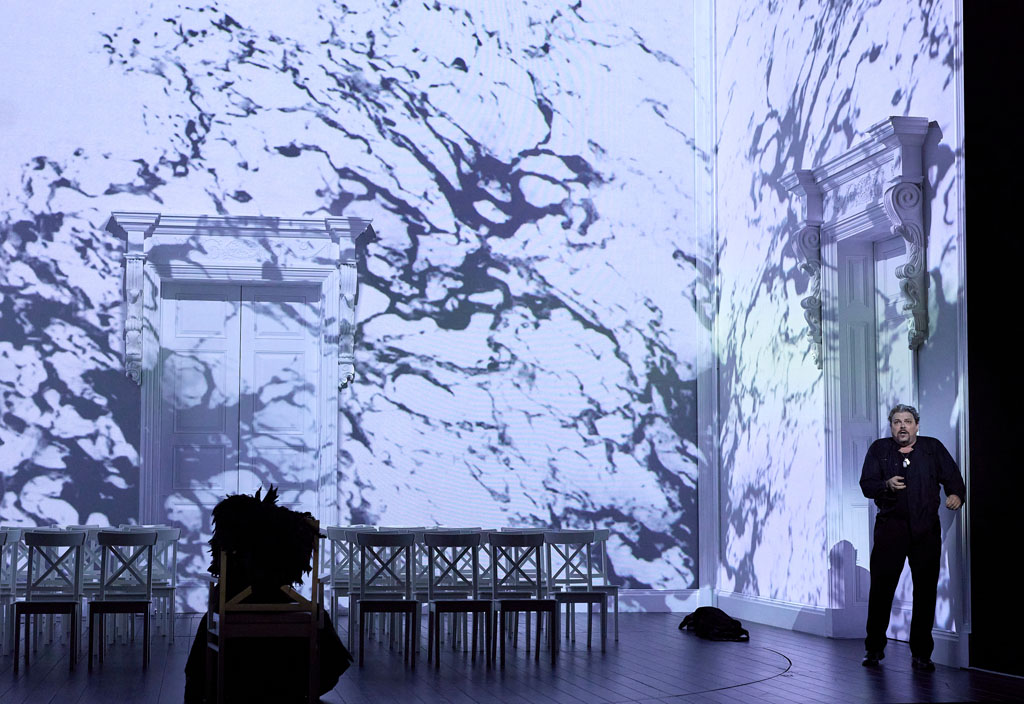
The video and images are splayed across this set using three 22K Epson projectors. To run the show, two disguise GX2c servers are employed, triggered by the lighting console.
“I always think of a video component as one more element in the visual composition of the stage. It doesn’t change how I approach the look of the scene. I just have to balance it with the other visual aspects of the picture.”
Award-winning lighting designer Verity Hampson identifies one of the challenges in negotiating these visual aspects, particularly in Idomeneo, as creating a smooth transition between the video and the lighting effects.
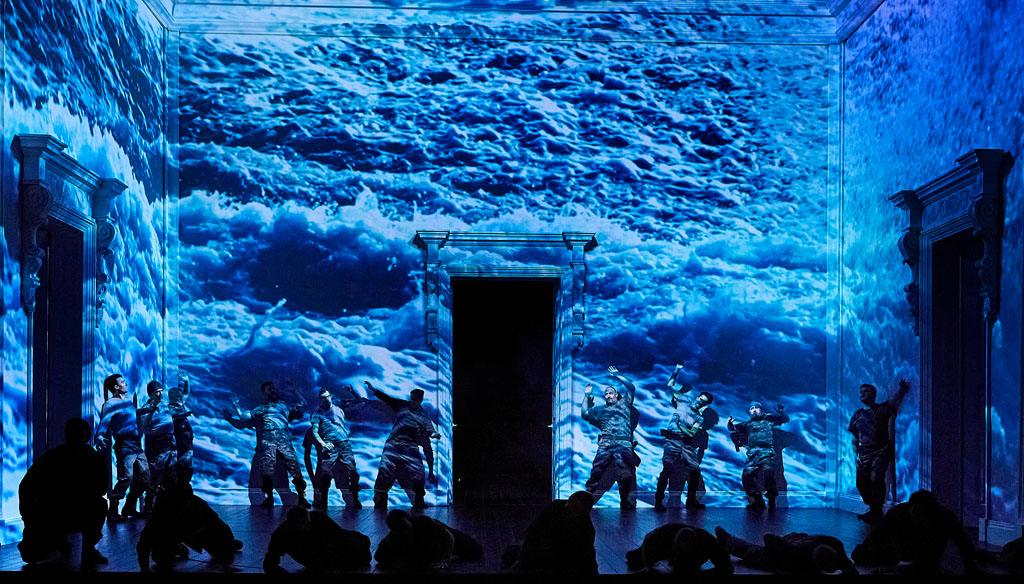
“The natural landscapes looked more realistic and immersive when they blended with the light,” describes Hampson. “To achieve this, Dave Bergman and I had to carefully plan the cues for both elements and make sure they matched in timing and intensity. It was not easy, but it was rewarding to see the final result.”
Hampson’s technique to create the rainforest effect in Idomeneo is a testament to her ability as a lighting designer to provide seamless, almost unnoticeable, yet highly effective results; “I chose a part of the video that showed the greenery and colours of the forest. I asked Gobotech in Brisbane to make eight custom full-colour glass gobos from that part.
I placed these gobos on the edge of the stage to frame the scene. This way, I could match the lighting to the video better than using standard gobos.”
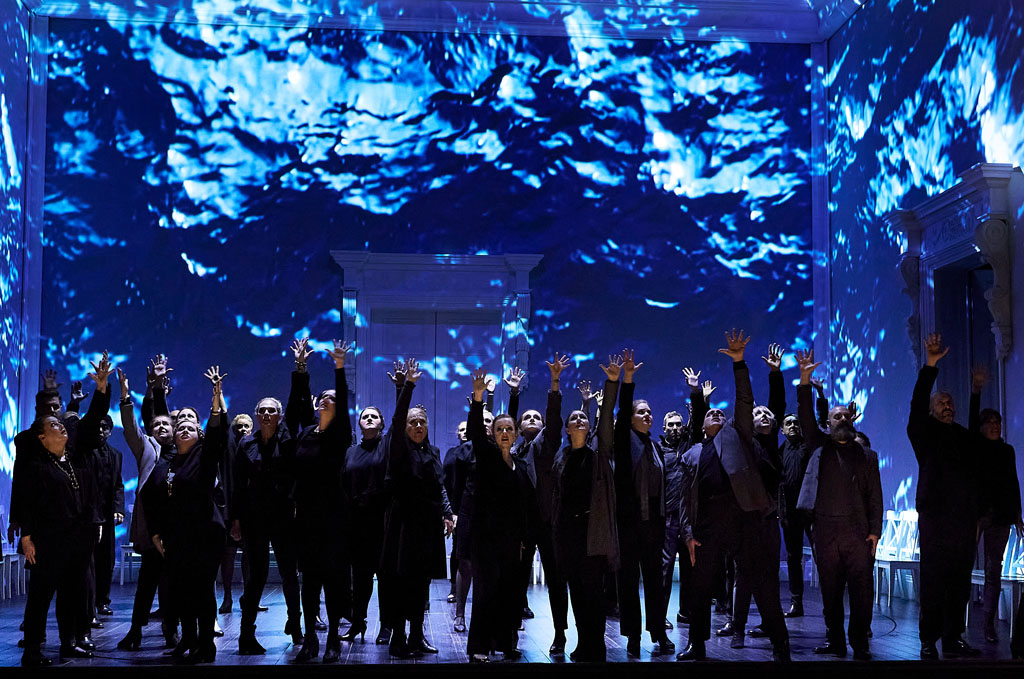
The Idomeneo lighting rig consists of 110 Martin Mac Encores, 36 ETC Lustre 2 and 14 additional Lustre units. “The Encores are divided into six lighting bars and an orchestra position, with different colour temperatures for the onstage and offstage units. The Lustre 2s are placed in the perch positions, the box booms, and the pit rail. The circle rail also has two more Encores. The Martin Mac Encores are ideal for situations where low fan noise is required,” Hampson details.
Syncing a large video element to live performance presents its challenge differently to each member of the creative team. From a lighting perspective, the biggest challenge is time. Trying to solve physical challenges before going to theatre helps alleviate the issue, but the potential for unexpected issues requiring more stage time can be stressful. According to video designer David Bergman, the challenge lies in “creating a show that feels and moves tightly with the performances as well as remaining flexible enough to allow for timing fluctuations that inevitably happen as part of a live performance…I’ve had to revisit a few key sequences in the opera quite regularly in the lead up to opening night to shift the timings of the edit as the tempi settle”.
For the director, “when the soundtrack to the visuals is performed live by humans with extraordinary, unamplified human voices, on man-made instruments and singing music and words created centuries before the performance, a director simply must not set up a competition for the audience’s attention.” Underscoring the importance of upholding operatic tradition in live stage performance and appropriate use of digital innovation for both aesthetic and functional purposes, Hume quite simply and sensibly states: “My job as director is to forefront the story and the people. The design must amplify and support that objective, not overwhelm it.”
Mozart’s Idomeneo is a collaboration between Opera Australia and Victorian Opera. It ran from 20 February to 15 March 2024 at the Joan Sutherland Theatre, Sydney Opera House.
Photos by Keith Saunders
Subscribe
Published monthly since 1991, our famous AV industry magazine is free for download or pay for print. Subscribers also receive CX News, our free weekly email with the latest industry news and jobs.

